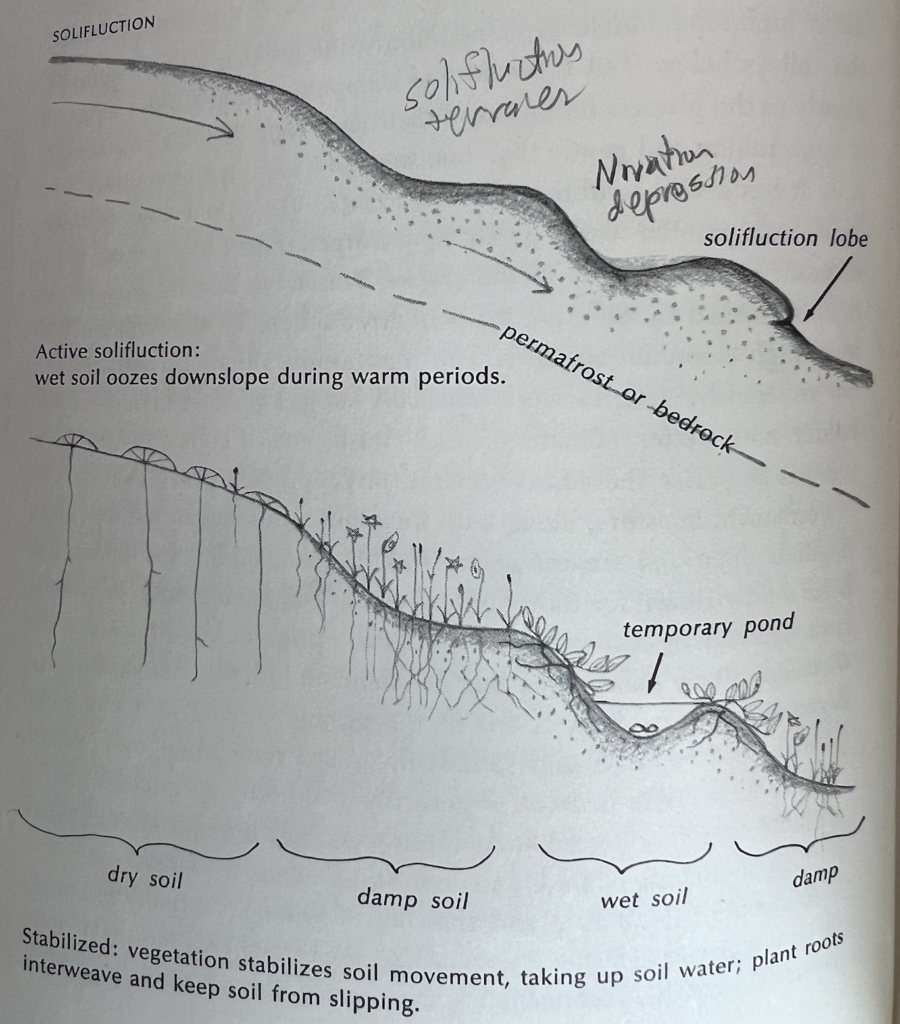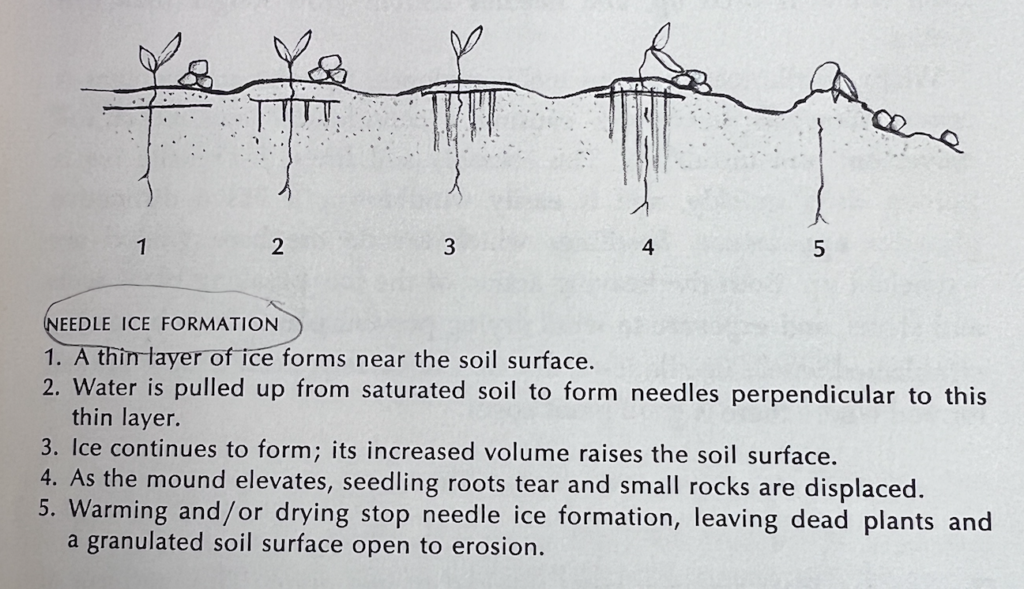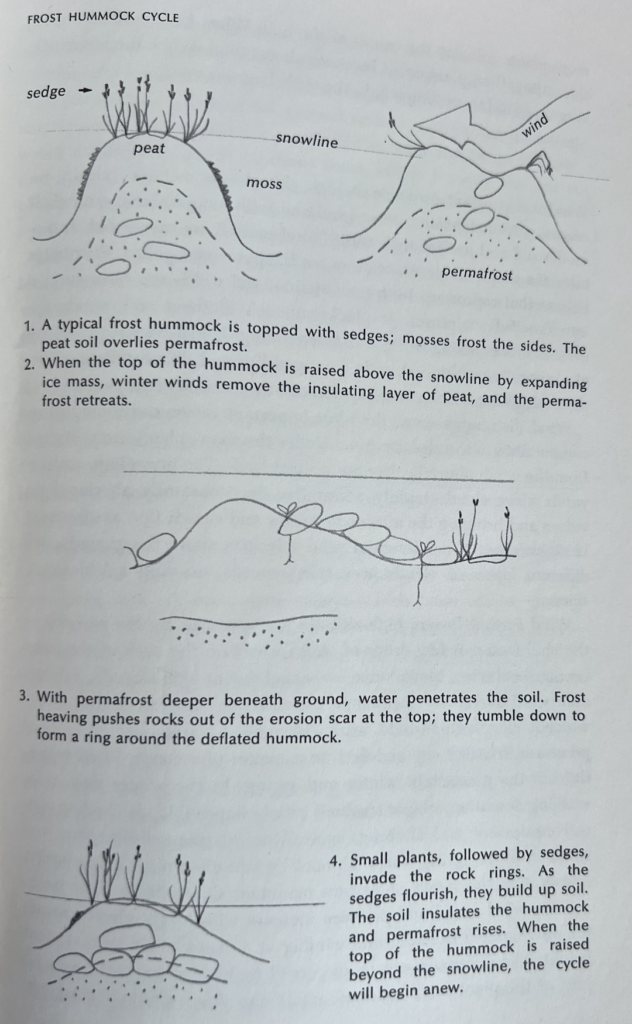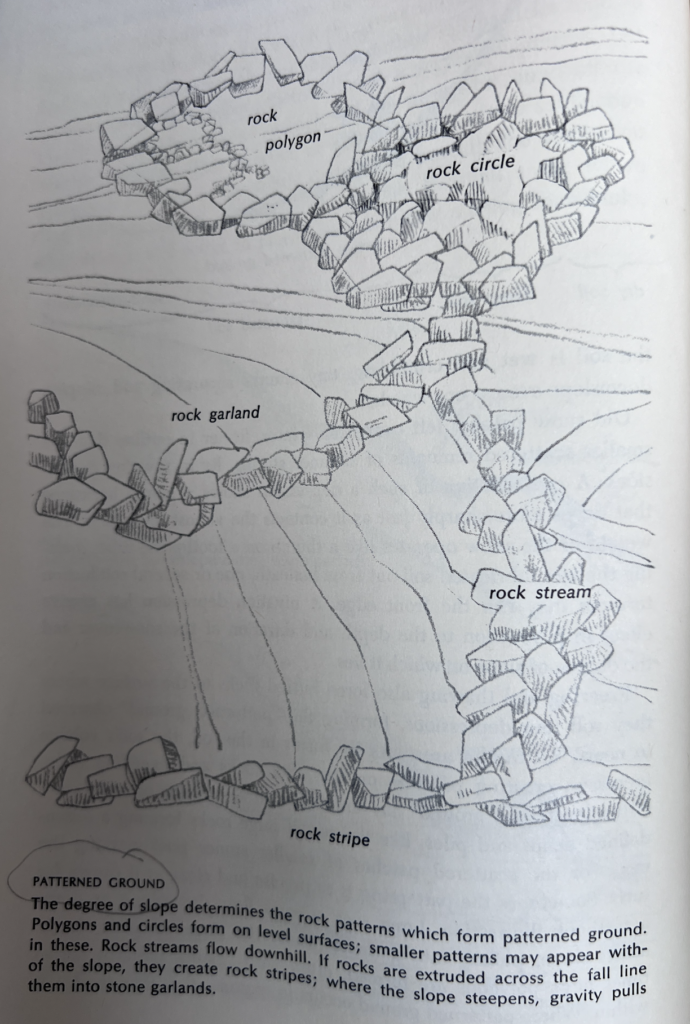February 2024…
This book was recommended in Kim Stanley Robinson’s The High Sierra: A Love Story, as a good guide to the ecology and botany of the Sierra Nevada (and the upper portions of other North American ranges). And, indeed, it is beautifully written with a narrative style in which the reader moves through landscapes with the authors, looking at this and that, in contrast to what I had expected would be more of a catalog or encyclopedic approach. The book is divided into two principle parts: part 1 examines elements of ‘above the trees’ ecosystems, like fellfields or krumholtz; part 2 looks at particular North American tundra ecosystems, with one chapter being on the Sierra Nevada.
Part I: The Alpine World
C1: The Alpine Environment
Light
At 14,000 feet the light – twice the ultraviolet and 25% more visible light than at sea level – creates a luculent landscape. The intensity is exacerbated by reflections off granite and snow.
Ice structure on the ground
The ground sparkles as if sequined. At high altitudes, cold air, radiation cooling and evaporation combine to chill the snow’s surface, while sunlight penetrates enough to melt the subsurface layers. When these two opposing factors of chill and heat are precisely balanced, the moisture from the thawing layer beneath the surface refreezes at the surface in a sheen of thin ice. The ice then acts as a greenhouse to trap heat and promote further melting beneath, so that there are ice bridges spanning hollows in the melting snow surface, creating a gleaming meadow.
– Above the Trees, Zwinger and Willard, p. 4
Beautiful descriptions of running water:
A southeast-facing boulder was totally coated with thick clear ice, but beneath the ice running water made dark droplets, like little tadpoles racing downslope, playing tag, catching each other in continuous playful arabesques. Boulders lying below snow patches shone with slender serpentine slivers where water plaited downward, the dull rock enlivened by the quicksilver sparkle. A few feet farther up the seepage was so slow that there was no glisten, just a change in the surface color of the granite that said “damp,” and the mosses were embedded in crystal.
ibid., p 5
“Entrapped air bubbles radiate out from the center of the ice, diagrammed in tiny dotted lines. ” –ibid. p 6
Tundra Geomorphology
The high alpine ridges surrounded but not covered by glaciers were particularly subjected to various kinds of freeze thaw action: action. “The combination of permafrost overlaid by saturated soil provides optimum conditions for the freeze-and-thaw phenomena that are common in both arctic and alpine regions.“
- Solifluction: Soil creeps downslope over an undersurface of bedrock or permfrost, forming solifluction terraces and nivation depressions.
- Ice forms a sheet on the surface, which pulls water up from below forming ice needles — eventually the soil volume expands, and tears the roots of plants, killing them and leaving the soil exposed to erosion.
- Frost Hummock Cycle. Sedges on top of hummocks that protrude above the snowline are killed by exposure to the wind. The bare peaty soil is eroded by wind and water, and the permafrost retreats deeper. Freeze thaw pushes rocks out of the top of the hummock, which tumble down to form a circle around it. Small plants invade the rock ring, and begin to grow, gradually dying and building up a mound of peaty soil. The hummock rises until it is above the snowline, and then the cycle begins again. At a larger scale this forms a pattern of hummocks and depressions.
- Rock Patterns. Frost causes the moist soil to expand, forcing rocks to the surface, where they form rings around hummocks, or garlands, stripes or streams depending on the lay of the land
Solifluction

Needle Ice

Frost Hummock Cycle

Rock Patterns

Views: 7